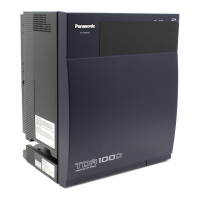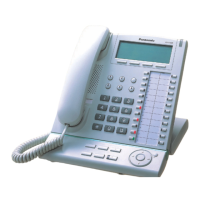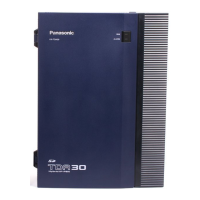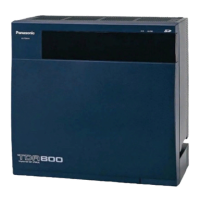1.27 Networking Features
222 Feature Guide
The PBX whose extensions will monitor the status of extensions at other PBXs must be assigned
Network PBX ID 1. The PBXs that have extensions that will be monitored must be assigned Network
PBX IDs 2-8. IDs 1-8 can only be assigned to one PBX each within the network. A maximum of seven
PBXs can have extensions that are monitored. Any other PBXs must be assigned Network PBX ID 0.
They will only retransmit received monitor data sent by PBXs 2-8.
3. QSIG Port Setting [Monitored PBX]
ISDN-QSIG (PBX Direct Connection)
Each QSIG port of a PRI card that will be used to transmit extension status information must be set to
do so through system programming. Even if a port is set to not transmit information, it will still receive
information from other PBXs.
Set the transmission setting for each port according to the layout of your network, so that extension
status information can travel from monitored PBXs to the monitor PBX.
[Example ISDN Network Port Setting]
ID Number PBX Function
1 Supports centralized operators to monitor extensions at other PBXs.
2-8 Supports extensions to be monitored
0 Retransmits monitor data through the network.
Transmit Extension Status Information Functions
Enabled • Transmit information on own PBX extensions
• Receive information from other PBXs; forward it to other QSIG ports of the
PBX
• Re-transmit information received by other QSIG ports of the PBX
Disabled • Receive information from other PBXs; forward it to other QSIG ports of the
PBX
PBX-1
Network ID 1
PBX-2
4001
Idle Busy
OFF
OFF
OFF
ON
ONOFF
ONOFF
ON
4001
Busy
4001
Busy
4001
Busy
PBX-3
PBX-5
PBX-4
Network ID 3
Idle
4001 NDSS
Busy

